Subtotal: $
Checkout
Emily Dickinson’s “Hope is the Thing with Feathers”
A Visual Interpretation
By Julian Peters
March 30, 2020
“Hope” is the thing with feathers
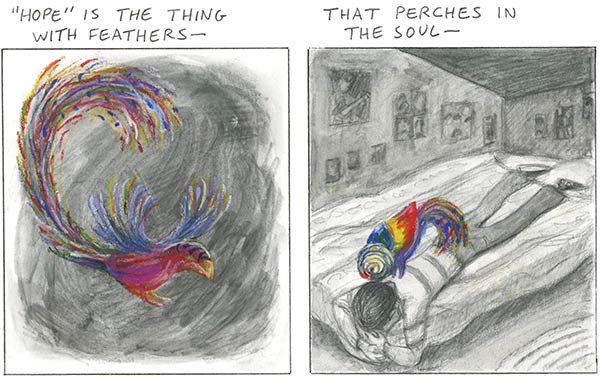
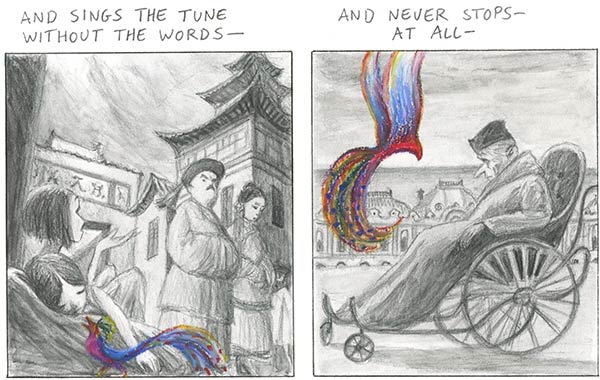

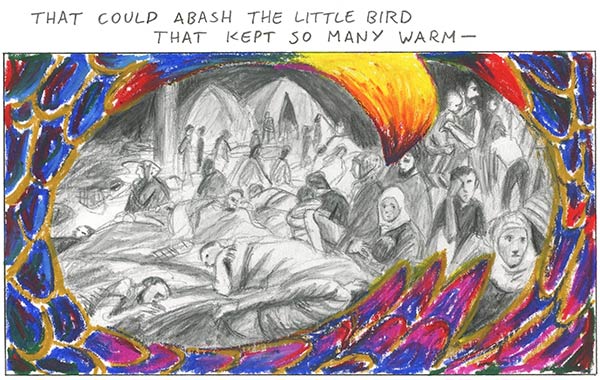
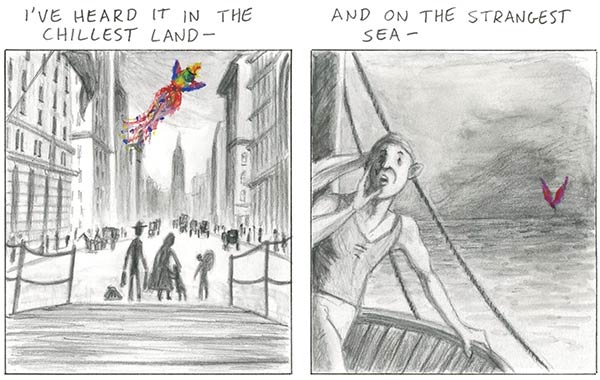
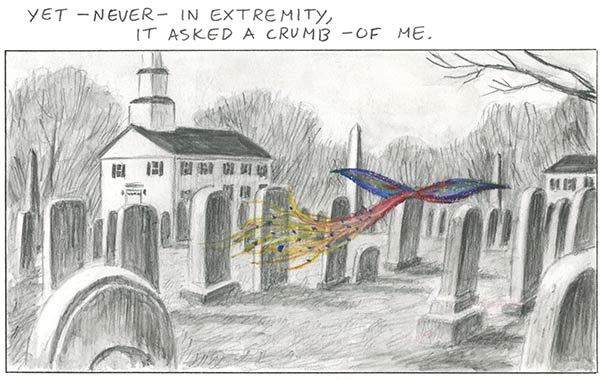
Preface to Poems to See By
Poetry and comics may seem like an unlikely combination, but the two art forms actually share a number of common elements. For starters, both the poet and the comic artist are concerned with the notion of rhythm – the beats created by the stressed and unstressed syllables and line breaks, or by the arrangement of comics panels and dialogue balloons. There is also the regular repetition of visual elements throughout a comic, which can be compared to the use of rhyme in poetry – take for example a Peanuts cartoon beginning and ending with the same image of Snoopy lying atop his doghouse. Perhaps the most significant parallel, though, at least in relation to this book, is the way both poetry and comics make use of the expressive potential of juxtaposition. In poetry, it is very often in the bringing together of two or more disparate images or concepts that the poetic spark is struck (as in, for example, T. S. Eliot’s description of the evening “spread out against the sky / like a patient etherized upon a table”). In a comic, meaning is often communicated in the contrast between successive panels, as well as in the contrast between the words and the images.
The poetry comics included in this book set out to adapt or, it could be said, translate twenty-four great English-language poems of the last two centuries into the visual language of comics. In the years since I began creating such works, I have often been contacted by teachers who tell me they are using them in their poetry classes. I’m delighted to think that one of my comics may have helped students to better understand a poem, or perhaps clarify their own interpretation of a poem, even if it differs significantly from my own, which is obviously only one of thousands. (As much as it’s true that a picture is worth a thousand words, it’s also the case that a single word can conjure up as many pictures as there are people who read it.)
I must confess, however, that my own motivation in creating these works had little to do with their potential educational uses. The truth is, I did it all for love of beauty. A beautiful poem is pretty much the most beautiful creation I can imagine. And the thing with beauty is that we as human beings are rarely content to simply enjoy it for what it is. If a beautiful stranger catches our eye, we wish we had the courage to go up and say hello. If we come upon a beautiful view, our immediate instinct is to take a picture of it (preferably with ourselves in it). If we hear a beautiful piece of music, we wish we could somehow live inside of it. And though in the end we can never quite hold on to beauty in the way it seems to call upon us to do, that will never stop human beings from trying. In setting out to turn beautiful poetry into comics, I wanted to pay tribute to the way these poems made me feel, to spend time with them, to pull them in as close to me as possible in the way that, as someone who draws comics, felt the most natural.
Montreal
November 2019
Already a subscriber? Sign in
Try 3 months of unlimited access. Start your FREE TRIAL today. Cancel anytime.






